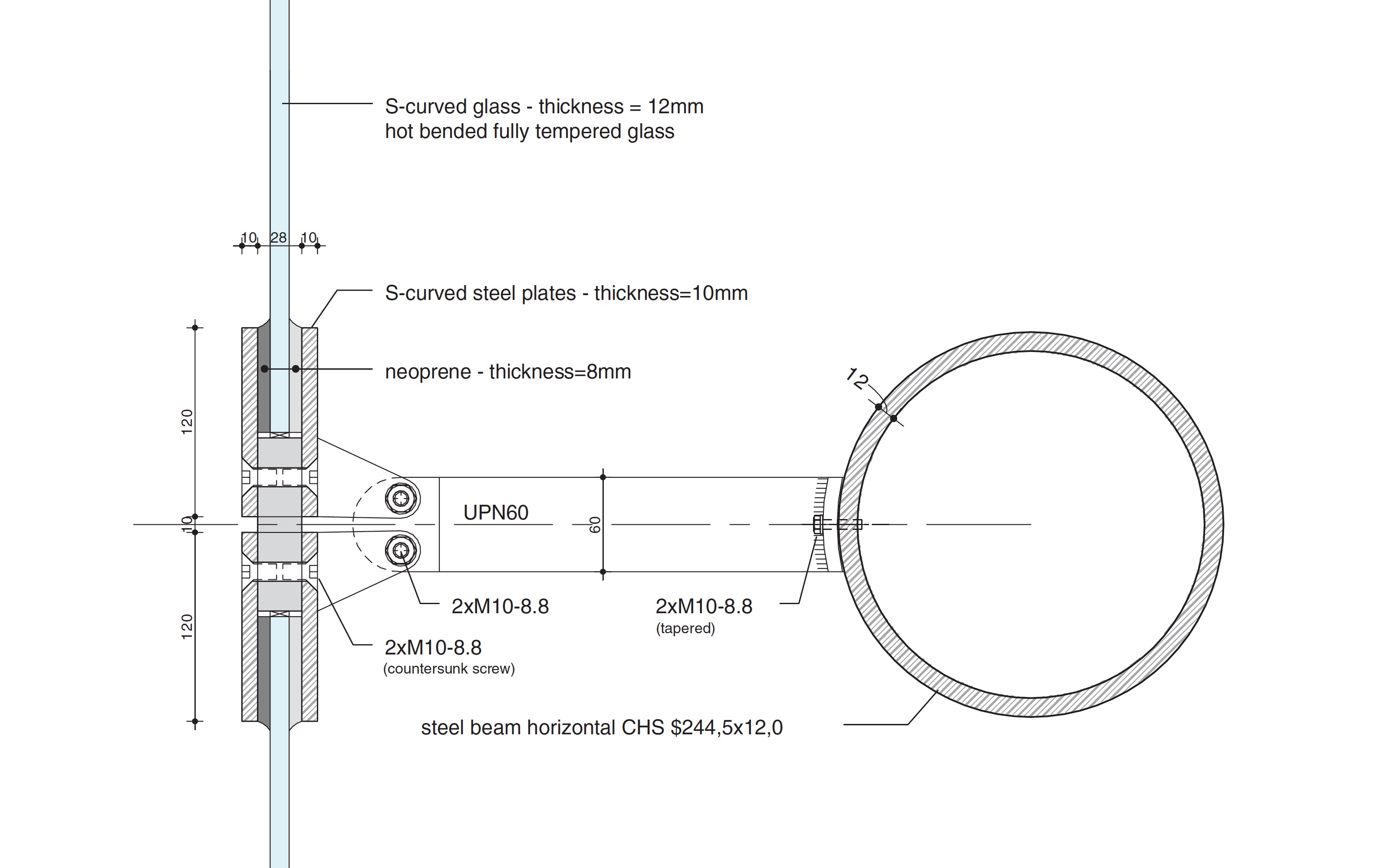Downloads
Keywords:
Glass, corrugated glass, facade, innovation, structural engineeringAbstract
Flat glass panels are in use since the time of the Roman Empire. In the ruins of the city of Pompeii, destroyed by the Vulcan Vesuvius in 79 DC, a glass panel in a bronze frame of 300×600mm was found. In this article we describe a mayor improvement in the structural behaviour of glass panels by making the glass curved, or more accurately, corrugated. Both the in- and out-plane loading meet far more resistance against deformation, and the corrugated glass panels have a largely increased bearing capacity with the same thickness of glass the flat panel has. Also architecturally the appearance of a corrugated glass panel in facades is far more appealing.
How to Cite
Published
Issue
Section
License

This work is licensed under a Creative Commons Attribution 4.0 International License.
Authors or their institutions retain copyright to their publications without restrictions.
References
El Croquis 131/132. (2006). OMA Rem Koolhaas. Madrid, Spain: Croquis editorial.
Knaack, U. (1998). Konstruktives Glasbau. Köln, Germany: Verlag Rudolf Müller.
Neutelings, W. J., et al. (2004). At Work! Rotterdam, The Netherlands: 010 Publishers.
Nijsse, R. (2003). Structural Glass. Basel, Switzerland: Birkh¨auser.
